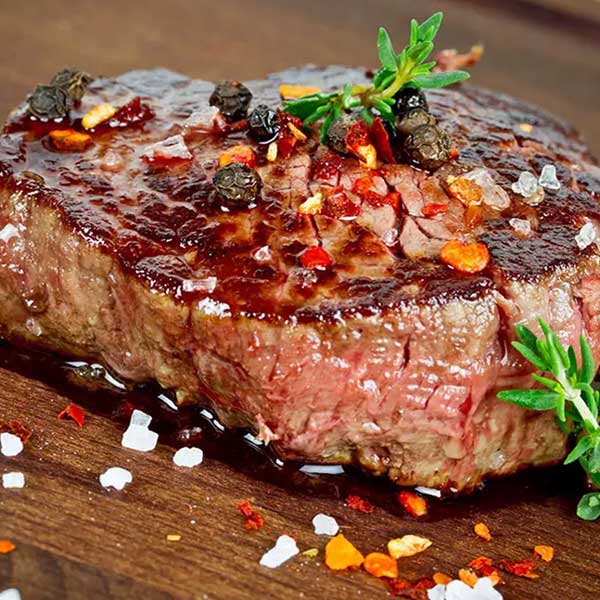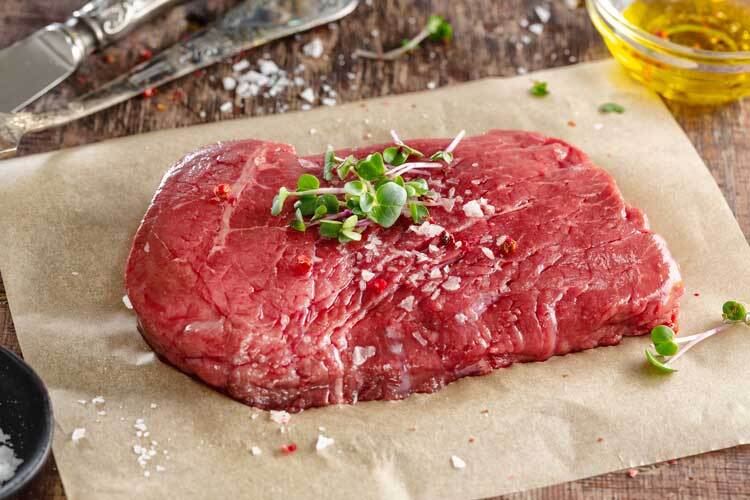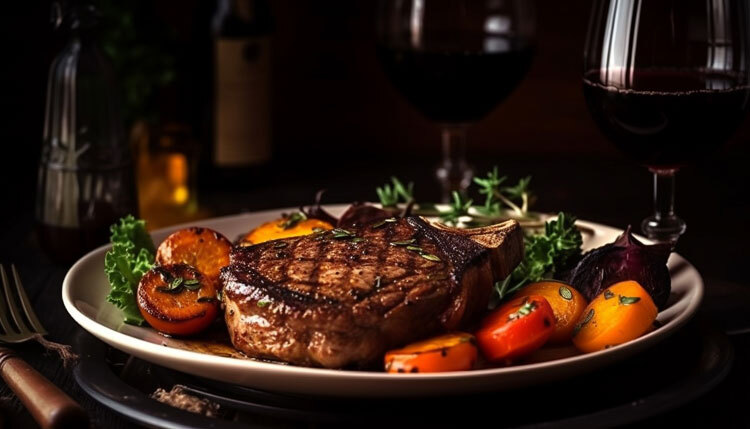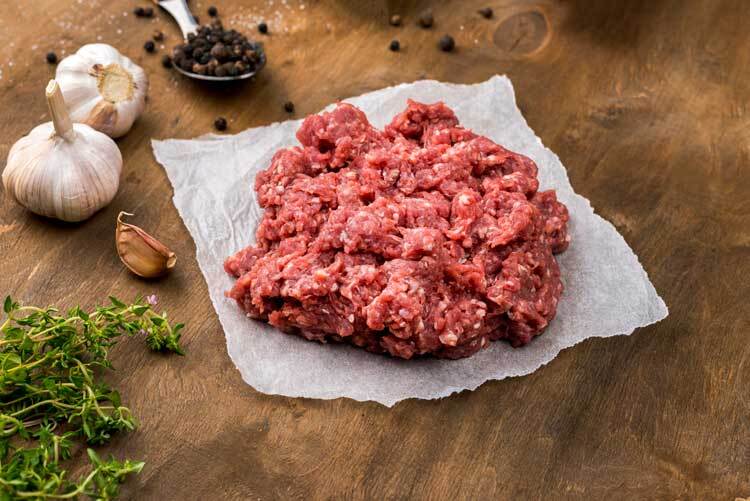What Is Boneless Chicken Breast?
Boneless chicken breast is a lean cut of poultry that has had the bones removed, leaving only the meat from the breast portion. It is one of the most popular and versatile cuts of chicken due to its mild flavour, tender texture, and ease of preparation.
Boneless chicken breasts are a staple in many households and restaurants worldwide. Their popularity stems from their ability to take on a wide range of flavours and cooking methods, making them a canvas for countless dishes across various cuisines. From grilled, baked, or pan-seared preparations to being the star ingredient in salads, sandwiches, or stir-fries, boneless chicken breasts offer endless possibilities.
The versatility of boneless chicken breasts extends beyond their culinary applications. They are also a convenient and time-saving option for busy home cooks or those looking for a quick and healthy protein source. Without the need to deal with bones, boneless chicken breasts can be easily sliced, diced, or pounded into desired shapes and sizes, streamlining the cooking process.
Nutritional Value
Boneless chicken breast is an excellent source of lean protein, making it a staple in many health-conscious diets. This protein is composed of all the essential amino acids needed for building and repairing tissues, making it a complete protein source.
In addition to protein, boneless chicken breast is a good source of several vitamins and minerals. It is particularly rich in niacin (vitamin B3), which plays a crucial role in energy metabolism and maintaining healthy skin and nerves. Chicken breast also provides significant amounts of vitamin B6, which supports immune function and protein metabolism.
Other notable vitamins and minerals found in boneless chicken breast include:
– Phosphorus: Essential for bone health and energy production
– Selenium: An antioxidant mineral that supports immune function
– Zinc: Crucial for wound healing and immune system support
– Vitamin B12: Necessary for red blood cell formation and neurological function
With its impressive nutrient profile, boneless chicken breast is a versatile and nutritious choice that can be easily incorporated into a balanced diet, providing essential nutrients while keeping calorie and fat intake in check.
Preparation Methods
Boneless chicken breasts are incredibly versatile and can be prepared in a variety of ways. Here are some popular cooking methods:
Baking: One of the easiest and healthiest ways to cook chicken breast is by baking it in the oven. Preheat your oven to 400°F (200°C), season the chicken with your desired spices and herbs, and bake for 20-25 minutes, or until the internal temperature reaches 165°F (75°C). Baking chicken breasts results in a juicy and tender texture.
Grilling: Grilling adds a delicious smoky flavour to chicken breasts. Preheat your grill to medium-high heat and grill the chicken for 6-8 minutes per side, or until cooked through. Brush the chicken with a little oil or marinade to prevent sticking and add extra flavour.
Sautéing: For a quick and easy meal, sautéing is a great option. Heat a skillet or pan over medium-high heat, add a little oil or butter, and cook the chicken breasts for 4-5 minutes per side, or until golden brown and cooked through.
Poaching: Poaching is a gentle cooking method that keeps the chicken breasts incredibly moist and tender. Bring a pot of water or chicken broth to a simmer, add the chicken breasts, and poach for 12-15 minutes, or until cooked through.
Marinating: Marinating chicken breasts not only adds flavour but also helps to tenderize the meat. Mix together your desired marinade ingredients (e.g., olive oil, vinegar, herbs, spices) and let the chicken breasts soak for at least 30 minutes, or up to 24 hours for maximum flavour.
No matter which cooking method you choose, be sure to use a meat thermometer to ensure the chicken reaches an internal temperature of 165°F (75°C) to ensure it’s cooked through and safe to eat.
Chicken Breast Recipes
Boneless chicken breasts are a versatile canvas for countless recipes across diverse cuisines. Classic dishes like Chicken Parmesan, Chicken Marsala, and Chicken Cordon Bleu showcase the protein’s ability to take on rich flavours. For ethnic flair, try Chicken Tikka Masala, Chicken Fajitas, or Teriyaki Chicken. Healthy options include Lemon Garlic Chicken, Balsamic Chicken, and Grilled Chicken Salad. Chicken breasts also lend themselves well to meal prep with dishes like Chicken Stir Fry, Chicken Burrito Bowls, and Marinated Baked Chicken that can be portioned out for the week ahead.
Flavour Pairings
Boneless chicken breast is a versatile canvas for a wide range of flavours. Its mild taste allows it to take on the flavours of herbs, spices, sauces, and marinades with ease. Here are some delicious flavour pairings to elevate your boneless chicken breast dishes:
Herbs
– Rosemary: Its earthy and slightly piney notes complement chicken beautifully.
– Thyme: This herb adds a warm, earthy aroma and flavour to chicken dishes.
– Basil: Fresh basil brings a bright, slightly sweet flavour to chicken.
– Cilantro: For a burst of freshness, cilantro pairs well with Mexican or Asian-inspired chicken dishes.
Spices
– Paprika: Smoked or regular paprika adds warmth and a touch of sweetness.
– Cumin: This earthy spice is a perfect match for chicken in Tex-Mex or Indian-inspired dishes.
– Chili Powder: A blend of spices like cumin, garlic, and chili peppers, it adds a kick of heat.
– Curry Powder: For an aromatic and flavourful twist, curry powder is a great choice
Sauces
– Pesto: The combination of basil, pine nuts, and Parmesan creates a vibrant sauce for chicken.
– Teriyaki: Sweet and savoury, teriyaki sauce adds a delicious glaze to grilled or baked chicken.
– Salsa: Fresh salsa adds a zesty, tangy flavour to chicken dishes.
– Creamy Garlic: A rich, garlicky sauce perfectly complements the tender chicken.
Marinades
– Italian Dressing: A classic marinade that infuses chicken with Italian herbs and tangy flavours.
– Yogurt Marinade: Yogurt tenderizes the chicken while adding a subtle tang.
– Citrus Marinade: Lemon, lime, or orange juice brighten up the flavour of chicken.
– Brine: A simple brine of salt and water can make chicken incredibly moist and flavourful.
With these flavour pairings, you can transform a simple boneless chicken breast into a delightful and flavourful meal every time.
Cooking Temperatures
– Cook boneless chicken breasts to an internal temperature of 165°F (74°C) as measured by a food thermometer.
– Chicken should be cooked until the juices run clear, and there is no pink remaining.
– Reheat leftovers to an internal temperature of 165°F (74°C).
Boneless vs Bone-In
The decision between boneless or bone-in chicken breast often comes down to personal preference, but there are distinct differences in flavour, texture, and cooking times to consider.
Flavour: Bone-in chicken breast tends to have a richer, more pronounced chicken flavour. The bone helps insulate the meat during cooking, allowing the natural flavours to develop more fully. Boneless breasts can sometimes taste a bit blander in comparison.
Texture: Bone-in chicken breasts retain more moisture during cooking, resulting in a juicier and more tender texture. The bone acts as a heat insulator, preventing the meat from drying out too quickly. Boneless breasts are more prone to overcooking and drying out if not cooked carefully.
Cooking Times: Boneless chicken breasts generally cook faster than bone-in breasts. Without the bone, the heat can penetrate the meat more directly, reducing cooking times by several minutes. Bone-in breasts require a bit more time to ensure the meat nearest the bone reaches a safe internal temperature.
When opting for boneless breasts, take care not to overcook them, as they can quickly become dry and tough. Bone-in breasts offer a bit more forgiveness, as the bone helps retain moisture even if cooked slightly longer. Ultimately, both options can yield delicious results when cooked properly, but bone-in breasts often provide a slight edge in flavour and juiciness.
Chicken Fun Facts
Did you know that chickens are one of the most widely domesticated animals globally? These feathered friends have been part of human civilization for thousands of years and have played a significant role in various cultures and traditions.
Chickens were first domesticated from wild jungle fowl in Asia, and the earliest evidence of their domestication dates back to around 8000 BC in China. Over time, they spread across the world, becoming an essential source of food and a symbol of fertility and prosperity in many societies.
In ancient Greece, chickens were associated with the god of prophecy, Apollo, and their behaviour was believed to have predictive powers. The Romans, on the other hand, used chickens in divination rituals, interpreting their feeding patterns to make important decisions.
Moving to the modern era, chickens have become a pop culture phenomenon. From the beloved Chicken Run movie to the iconic rubber chicken prank toy, these birds have captured the hearts and imaginations of people worldwide.
Interestingly, chickens are quite intelligent creatures. They can recognize up to 100 different faces, have complex social hierarchies, and even possess the ability to perform basic arithmetic. Who knew these feathered friends were so smart?
So, the next time you enjoy a delicious boneless chicken breast, take a moment to appreciate the rich history and cultural significance behind these remarkable birds.











